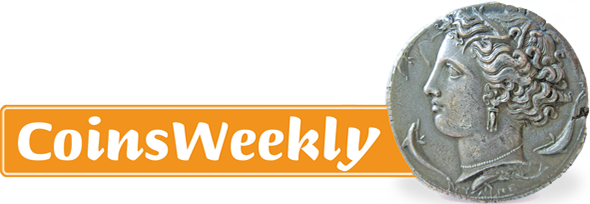Numismatic Puzzle: Manilla
A manilla looks like a bangle, but its opening is too wide to be used as jewellery. In fact, Manillas were used for centuries as a currency by Europeans to trade with West African nations.
A manilla looks like a bangle, but its opening is too wide to be used as jewellery. In fact, Manillas were used for centuries as a currency by Europeans to trade with West African nations.
In 1817, the engraver Benedetto Pistrucci created a truly evergreen design for the Royal Mint. His interpretation of England’s patron saint, the dragon-slayer George – shown here on a coin of Queen Victoria from 1887 – is still used on British coins today!
In 1905, Bertha von Suttner became the first woman to receive the Nobel Peace Prize. The Nobel Committee thus honoured the life’s work of this dedicated pacifist and writer. Today, her face can be found in many purses and wallets: on Austria’s 2-euro circulation coins.
This is a boar’s tusk. On a group of islands east of Australia, wealth is traditionally quantified using pigs as a unit of measurement. Circular boar’s tusks are still used as bride price or atonement money – and they even adorn the national flag of Vanuatu.
These “ship guldens” were minted by the Dutch in West Friesland for their colony at the Cape of Good Hope. When the Dutch lost this territory, they sent the coins to Batavia on the island of Java. There, they were finally put into circulation in 1803.
This gold double ducat from c.1475 depicts Gian Galeazzo Maria Sforza. In name – and in name only – the youth was Duke of Milan as he was under constant guardianship until his early death. What remains are coins minted for him depicting splendid Renaissance portraits.
Today’s coin is of the type of a Venetian ducat, a so-called zecchino. This gold specimen from around 1350 shows the doge, the head of state of Venice, receiving a banner by St Mark, the city’s patron saint.
In the 11th century, Kloster Allerheiligen (All Saints Abbey) in Schaffhausen was granted the right to mint coins. Take a look at this 13th-century bracteate and decide for yourself what you see: a ram, as an allusion to the town’s name, or a Lamb of God?
Matapan is the Arabic term for the enthroned Christ on the reverse of a heavy Venetian silver coin introduced around 1200. Today, however, you will put together the obverses’ motif: St Mark who presents the banner to the head of state.
As a sign of their power, the abbesses of the Fraumünster in Zurich had the right to mint coins. But by the time they decided to depict themselves on their issues, as on this late 13th-century pfennig, they had already had to surrender much of their power to the citizens of the town.
We are the bridge connecting the international numismatic world. Our readers include collectors, professional coin dealers and researchers, as well as all those involved in coin production. We are read in 170 countries! We provide you with information on everything you want to know about the subject of money – from antiquity to the present day. And much more...
Follow us
You need to load content from reCAPTCHA to submit the form. Please note that doing so will share data with third-party providers.
More InformationYou are currently viewing a placeholder content from Facebook. To access the actual content, click the button below. Please note that doing so will share data with third-party providers.
More InformationYou are currently viewing a placeholder content from Instagram. To access the actual content, click the button below. Please note that doing so will share data with third-party providers.
More InformationYou are currently viewing a placeholder content from X. To access the actual content, click the button below. Please note that doing so will share data with third-party providers.
More Information